Check out our monthly ideas and tips for registered sites. These tips include best practices and innovative ideas for the development of your Harvest of the Month program.
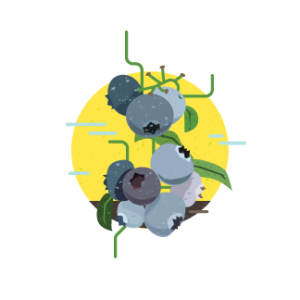
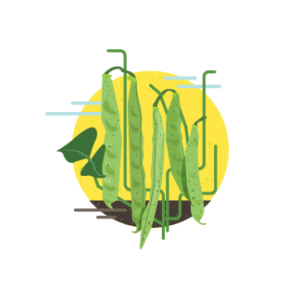
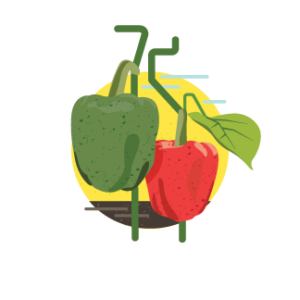
SUMMER FEEDING PROGRAM TIPS AND INFORMATION
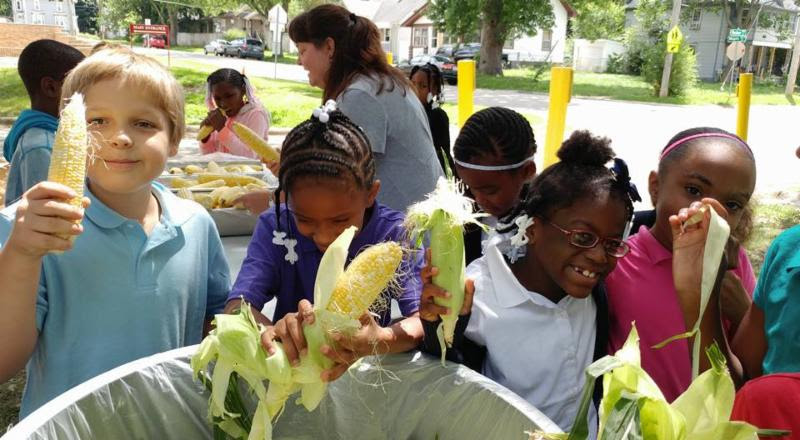 Linking summer feeding and summer garden programs to Harvest of the Month is an opportunity to grow or purchase locally at the height of the season!
Linking summer feeding and summer garden programs to Harvest of the Month is an opportunity to grow or purchase locally at the height of the season!
For sites who feed or garden during the summer months utilizing a Harvest of the Month program can be very advantageous!
- Experiment with new menus and recipes! Feeding sites, it’s the perfect time to try out Harvest of the Month recipes and local/regional menus with those reduced participation numbers during summer feeding. Experiment with local veggies, dairy, grains, and fruits to gauge your kid’s interest and find their favorites. Create mini surveys using your site’s phone ap or go “old school” and share printed surveys to get those customer responses to your new menu items. Doing the groundwork before the busy school year begins will give you a time advantage and allow you to plan ahead!
- Buying local produce, dairy and grains during the summer provide the perfect opportunity to choose potential new suppliers and develop a relationship with new, local vendors. Look for, and talk to producers at your local farmers market to check out offerings and availability through late fall. Ask about a potential farmer visit to your cafeteria during the winter, or a field trip to the farm in the spring or fall.
- When is local produce a sweet deal? We all know the difference between a home-grown tomato and a store-bought tomato. The taste difference during the height of the season can be eye-opening for young eaters. It’s a flavor and sensation overload! If you have an opportunity to purchase locally during the summer your kids will taste local produce when it is best. What better way to introduce them to interesting and new fresh fruits and veggies?
- Orchestrate an ingredient processing day in mid-August. Creating a “fifth season” by processing veggies at the peak of the harvest can be an affordable option for local ingredients in your entrees during our long, midwest winters! Utilizing seconds quality produce from area farms when the market is heavy with fresh veggies, or utilizing veggies grown in your school or community garden at the height of the growing season is a great way to create a frozen larder of vegetables you can use in entrees, pizzas, soups, and stews throughout winter. You can read about a progressive Minnesota school district program which uses both garden and local produce all year-long here and check out food preserving curriculum here.
- Garden programs that run through summer school and beyond have an opportunity to tie what they’re producing to Harvest of the Month and utilize lessons and activities. Continuing with Harvest of the Month programming through the summer months can add more activities and education to garden work. Creating a summer garden maintenance schedule with added learning activities as extra credit for fall classes can be the motivator that keeps kids, and parents, engaged all summer long!

Looking for a veggie that your kids will love? Sweet Corn is that vegetable! An American staple, corn (called maize in other countries) was first cultivated in Southern Mexico and Central America six to ten thousand years ago. Native Americans taught the European settlers how to grow and prepare corn, including popcorn, which they ate as a breakfast cereal with milk and maple syrup.
Why is there so much “silk” on an ear of corn? Before the kernels of corn grow the tassel is in bloom. The wind blows and shakes the pollen powder off of the tassel and the powder falls on the ends of the silk which stick out of the little ear of corn to be. Each thread of silk then carries a little of the powder down to the spot on the ear where it is attached and thus the grain of corn receives the fertilizing necessary to develop it into a ripe seed. That is why there is one strand of silk for each kernel of corn!
Access the Corn page to see all of the facts, tools, and recipes.
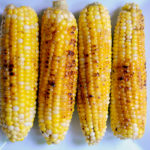
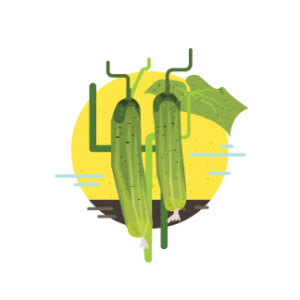
Access the Cucumber page to see all of the facts, tools, and recipes.
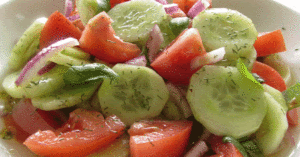
Versatile and Abundant Summer Squash!
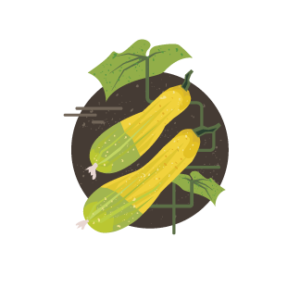

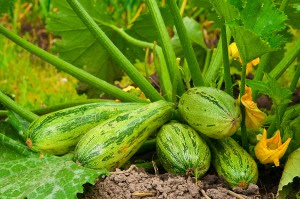
Featured Recipes for Squash:
AUTUMN FEEDING PROGRAM TIPS AND INFORMATION

Fall is back to school time and peak harvest season for Illinois! Whether you’re ready to harvest the fruits of a school garden or purchasing veggies from local farms, these autumn tips and information can help you celebrate Harvest of the Month with flying (fall) colors.
Amplify your autumn celebrations by joining Harvest of the Month and the Great Apple Crunch on the second Thursday in October!
OCTOBER BOO-TACULAR VEGGIE EXPERIENCE!
It’s October! This is one of the most festive months of the school year and an easy month to step up your Harvest of the Month activities.
 Feature Local Autumn Potatoes
Feature Local Autumn Potatoes
The potato is the perfect blank canvas for creating a Spooktacular Havest of the Month event and capitalizing on the fun in October!
Try a mixed harvest recipe like Southwest Sunrise Oven Potatoes featuring both red and sweet potatoes for the colors and flavors of autumn.
Try serving “Mummified Mashed Potatoes” or “Mummy Food Spuds” using local/regional potatoes in your mashed potato recipe. Decorate with adorable and inexpensive Potato Mummies on the service lines! These humorous spuds require a little first-aid gauze, and a couple googly eyes from your local craft store to get your kids giggling through the meal lines.

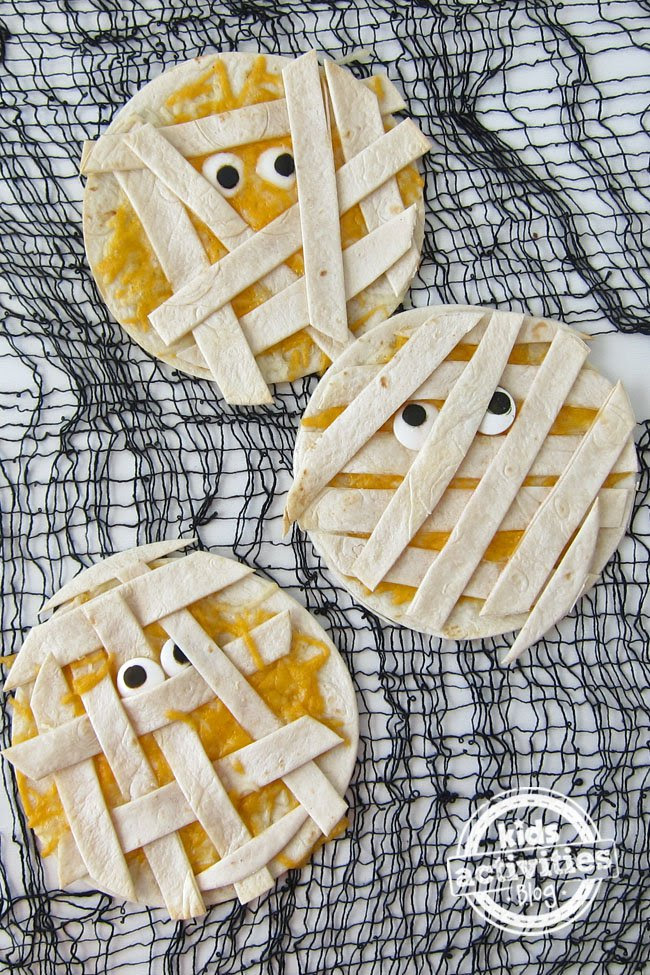
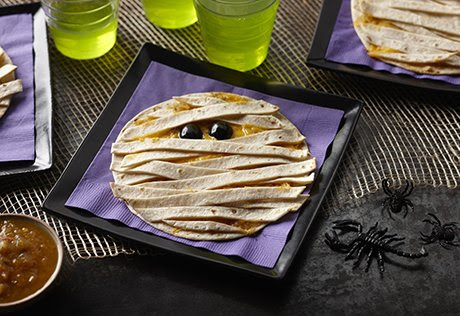 You can serve up seasonal fun and local foods at breakfast or lunch!
You can serve up seasonal fun and local foods at breakfast or lunch!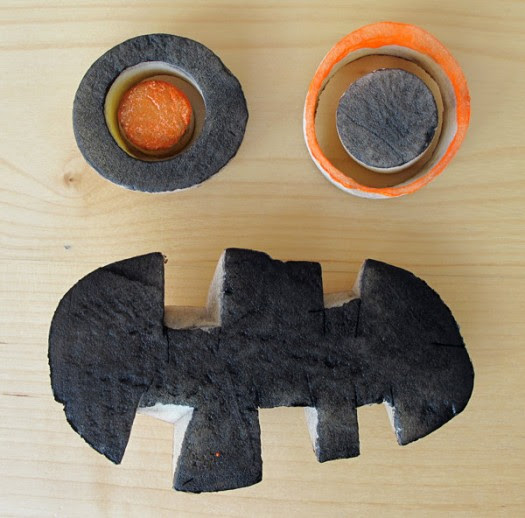

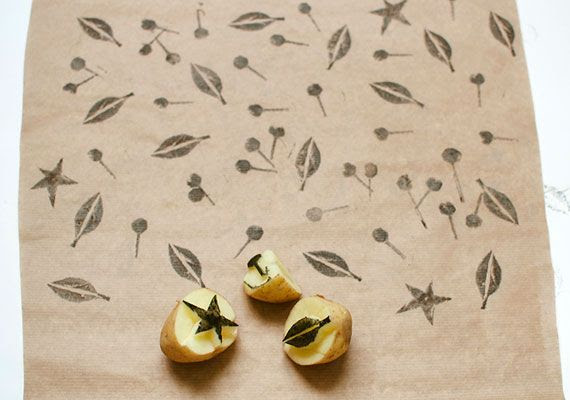 You can create Halloween potato stamps as an art project with young children to make cafeteria signage and posters, too.
You can create Halloween potato stamps as an art project with young children to make cafeteria signage and posters, too.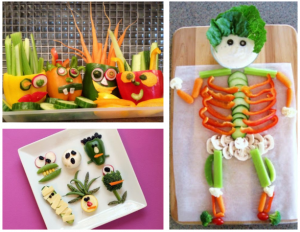
 More recipes for October!
More recipes for October!JOHNNY APPLESEED, A HERO OF AMERICAN FOLKLORE! 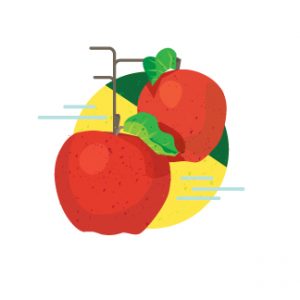
A hero of American folklore, Johnny Appleseed was said to be a barefoot wanderer with a tin pot hat, and a sack of apples, so he might leave the start of trees everywhere he went. But unlike his tall tale colleagues Paul Bunyan and Babe the Blue Ox, Appleseed’s story was based on a real man. His name was John Chapman, and his real life was far richer and more interesting than his legend.
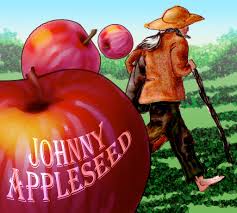
You can still visit one of his trees in Nova, Ohio. This site is home to a 176-year-old tree, the last known to be planted by Johnny Appleseed himself. It grows tart green apples, which are now used for applesauce and baking in addition to cider making. While Chapman might be glad to see his seeds still bearing fruit, he’d likely be sad to hear this tree is a noted bud source for grafting new apple trees. You can read more about John Chapman at: MentalFloss.com.
Finding Local Storage Apples in our region:
Regional/local apples are harvested in the fall and are a good winter storage crop grown in Illinois, Wisconsin, Michigan, Minnesota, Indiana, and in Missouri, (for our western and southern Illinois schools!). There are two companies selling sliced regional apples (when available) to schools: Richland Hills Farms in Wisconsin and Peterson Farms in Michigan. Check with your produce distributor to order. If you cannot get these pre-cut products try contacting the companies directly to locate a distributor near you.
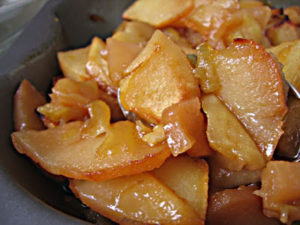
- Several studies have looked at the effect of apples on risk factors for heart disease. One of the studies, done in hamsters, showed that apples can reduce total cholesterol levels and lead to drastic reductions (48%) in plaque buildup inside the arteries. If these animal studies were to apply to humans, it would mean that apples could be highly useful in helping to prevent cardiovascular disease (heart attacks and strokes).
- Apples contain many vitamins and minerals, but not in high amounts. However, apples are usually a good source of vitamin C.
- Vitamin C: Also called ascorbic acid, vitamin C is a common antioxidant in fruits. It is an essential dietary nutrient that has many important functions in the body (12).
- Potassium: The main mineral in apples. High intake of potassium may have beneficial effects on heart health.
- The pectin in apples is a probiotic, providing food for friendly gut bacteria.
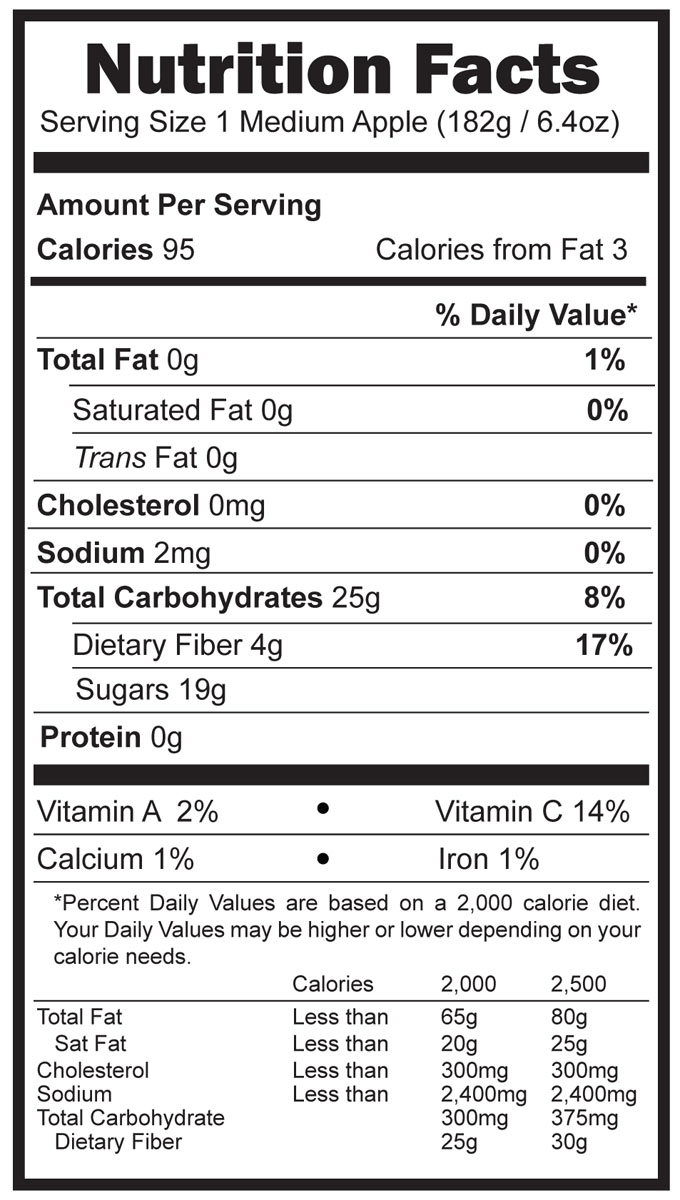
- The phytochemicals in apples provide as much antioxidant health-protected capacity as a mega-dose of vitamin C.
- Nutrition Summary: One medium apple, about the size of a baseball, delivers all this:
- One-fifth of the dietary fiber you should be eating each day for cardiovascular and digestive health. That’s more than a bowl of bran cereal – and better tasting, too.
- None of the bad stuff- no fat, no saturated fat, no trans fat, no sodium and no cholesterol. Apples are guilt-free!
- Small amounts of vitamin C, the best-known antioxidant vitamin.
- Small amounts of potassium, an electrolyte that’s key for heart health.
- All that, and only 80-100 calories depending on the variety.
Tie your Harvest of the Month to The Great Apple Crunch in October. Feature local apples on your breakfast line, on the salad bar, as a fruit option on the tray, or incorporated into recipes at breakfast and lunch, and in cafeteria tastings to celebrate the Great Apple Crunch! Decorate with apple-pumpkin and apple stamped sneezeguard cards or posters sharing apple fun facts and where your local apples were grown. Register for Apple Crunch here.
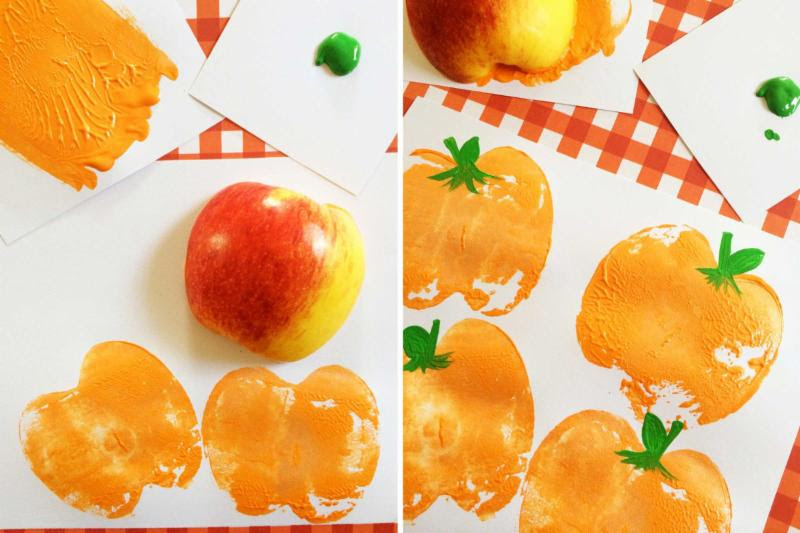

IN NOVEMBER, YOU CAN STILL ENJOY AUTUMN’S BOUNTY!

Add some autumn flair to your Harvest of the Month activities and share warm, seasonal dishes on your tray.
FEATURE LOCAL BUTTERNUT SQUASH
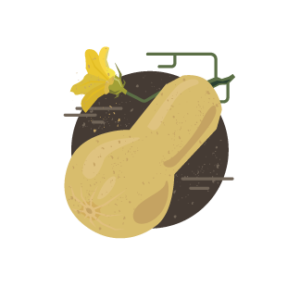 Welcome to late autumn! Temperatures are dropping and football and holiday celebrations are taking center stage as we move slowly into another Illinois winter.
Welcome to late autumn! Temperatures are dropping and football and holiday celebrations are taking center stage as we move slowly into another Illinois winter.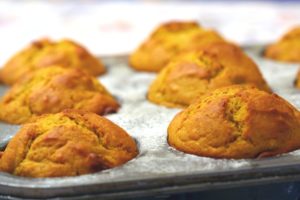 Featured Recipes:
Featured Recipes:HAVE YOU TRIED FEATURING FRESH HERBS IN YOUR FEEDING OR GARDEN PROGRAM?
Storage
How to Chop Herbs
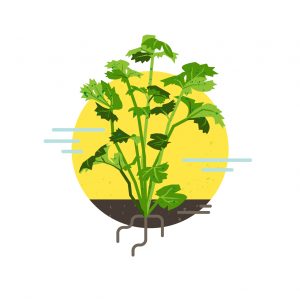 To maximize the flavor of your herbs you’ll want to chop them as finely as possible. The finer you chop your herbs, the more oils released and the more fragrant the herb will become. Delicate herbs like parsley and cilantro should be chopped right before use as they will lose their aroma quickly.
To maximize the flavor of your herbs you’ll want to chop them as finely as possible. The finer you chop your herbs, the more oils released and the more fragrant the herb will become. Delicate herbs like parsley and cilantro should be chopped right before use as they will lose their aroma quickly.When to Add Fresh Herbs
Which herb goes with which food?
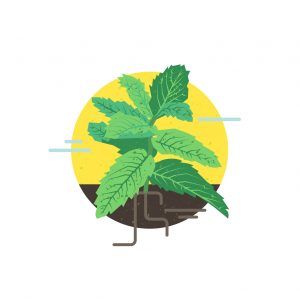
The how-to primer for adding scratch recipes in increments and improving processed foods along the way.
Fun Fact: Illinois is the Pumpkin state!
Nutrition Facts
These nutrition facts can be added to middle/high school meal lines and cafeteria signage to educate, as well as, draw attention to your Harvest of the Month!
Sharing your Harvest of the Month activities with other school staff can lead to multiple exposures for your featured fruit or veggie. The more exposure kids have to a new fruit or veg, the more likely they are to accept it! Carrots may not be an issue with kids, but applying this technique to other, less popular veggies like pumpkin or dark leafy greens can be the difference between acceptance and total disinterest.

- Pumpkins are 90% water. And that makes them low calories. One cup of canned pumpkin only has 83 calories and only half a gram of fat.
- Pumpkins also have more fiber than kale, more potassium than bananas and are full of heart-healthy magnesium and iron.
- Pumpkin is also a good source of Vitamin E (Alpha Tocopherol), Thiamin, Niacin, Vitamin B6, Folate, Iron, Phosphorus, Vitamin A, Vitamin C, Riboflavin, Potassium, and Copper.
- Go to the Harvest of the Monthwebsite. Hover your mouse over the Feeding Sites tab at the top of the home page. Click on The Harvest in the drop down menu
- Click on Autumn to go to the seasonal list of fruits and veggies.
- Next, click on a veggie or fruit item, add your password if prompted, and the nutrition and fun facts are all there to copy and paste onto your line signage and wall posters!
Featured Recipes
Pumpkin Squares
Pumpkin Apple Butter
3-Ingredient Creamy Pumpkin Pasta
WINTER PROGRAM TIPS AND INFORMATION
 Winter procurement can lead to great opportunities when you share Illinois foods that are often overlooked. With fresh and storage crops now depleted, why not promote local honey, dairy, or grains on your menu or in your garden program? Share, promote, and educate your kids about “other” local foods!
Winter procurement can lead to great opportunities when you share Illinois foods that are often overlooked. With fresh and storage crops now depleted, why not promote local honey, dairy, or grains on your menu or in your garden program? Share, promote, and educate your kids about “other” local foods!
TIS THE SEASON FOR A LOCAL CELEBRATION!

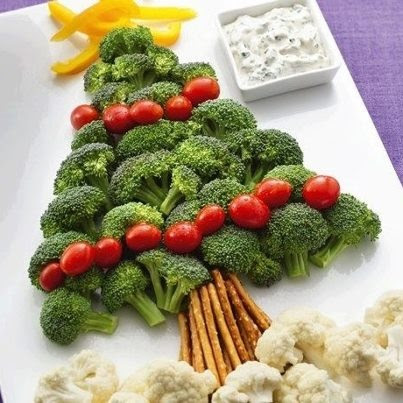 Did you know a large portion of fresh and dried cranberries in November and December are grown in Wisconsin? Feature these holiday gems on the salad bar and in baked goods! Share fun information about how cranberries are grown with your students. Check out the growing process here. Discover Harvest of the Month cranberry facts and recipes here.
Did you know a large portion of fresh and dried cranberries in November and December are grown in Wisconsin? Feature these holiday gems on the salad bar and in baked goods! Share fun information about how cranberries are grown with your students. Check out the growing process here. Discover Harvest of the Month cranberry facts and recipes here.IN DECEMBER, FOCUS ON HEALTHY CELEBRATIONS!
Change the Celebration Focus to Healthier Choices
On the Meal Lines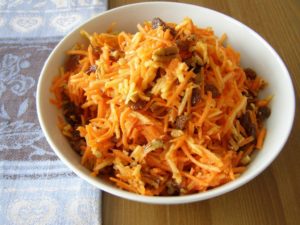

- New! (Your district name) (your district’s mascot) Ranch Carrot Fries are available today on the lunch line!
- Limited Time Only! (Your district name) (mascot) Fiesta Carrot Fries are available today on a lunch line near you! Add some spice to your holidays!
VALENTINE CELEBRATIONS WITH BEETS!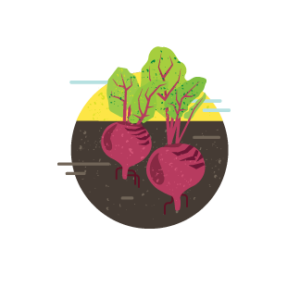
If your students aren’t eating your Harvest of the Month monthly veggies providing a little fun on your lunch lines and education to improve your customer response could be the boost your program needs! Let’s face it, beets are not an easy sell to school-age children. Building a celebration sprinkled with fun education can influence your students and help to gain acceptance of these earthy beauties!
Here are a few examples of this technique.
- Beets used as a dye: Cutting beets into simple shapes and using them as a stamp is a great way to decorate serving line and cafeteria signage. Fun facts with red beet hearts stamped all around will draw student interest. (photo courtesy of www.parentmap.com)

- Creating temporary tattoos for students in the shape of a red heart that are a safe and fun way to celebrate this dark, red vegetable during February.
- “Will You Beet My Valentine?” This is a fun and inexpensive way to promote your February Harvest of the Month. Create a theme lunch for younger students, such as k-5 with a sweetheart beet promotion!
- “With Every Beet of My Heart” is a wonderful way to tie beets to that popular February holiday! Create signage in the form of giant beet love valentines to paper your wall space using beet stamps cut into the shape of hearts.
- Veggie Love Is In the Air! Utilizing a Valentine theme can provide a fun learning opportunity in the lunchroom and in the classroom. Themed lunch celebrations also increase participation numbers, which is something we can all appreciate!
- “Pickle Me Pink!” Sharing how foods were preserved in the past by serving pickled local beets with a side of education on the preserving process is a sure win. Adding these pickled beauties to a themed Valentine celebration may be the catalyst you need to encourage kids to taste something new. Our Quick Pickled Beets recipe can take the center stage on salad bars, a special mainline salad or in cold sandwich lunches throughout February!
Featured Recipe: Winter Sunset Salad, A beautiful fresh salad with the colors of a winter sunset- a great way to get your students to try beets!
For a colorful and healthy salad try Winter Sunset Salad as your Harvest of the Month recipe! This recipe is rated BASIC for prep skills and utilizes canned mandarin oranges, as well as red or gold beets.
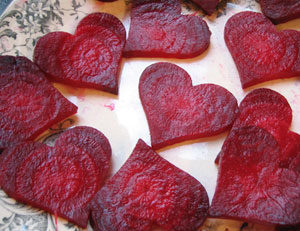 We have more cold and hot beet recipes including Quick Pickled Beets, Beets and Sweets, and Roasted Balsamic Beets for food service. If you want to avoid the red staining that can occur with Red Ace beets look for Chioggia (Candy Stripe) or golden beets. Chioggia beets, pictured below, have an amazing striped color and a very mild flavor. Golden beets are sweeter than the standard red beet and do not stain surfaces. Either beet makes a delicious and nutritious addition to a cold salad.
We have more cold and hot beet recipes including Quick Pickled Beets, Beets and Sweets, and Roasted Balsamic Beets for food service. If you want to avoid the red staining that can occur with Red Ace beets look for Chioggia (Candy Stripe) or golden beets. Chioggia beets, pictured below, have an amazing striped color and a very mild flavor. Golden beets are sweeter than the standard red beet and do not stain surfaces. Either beet makes a delicious and nutritious addition to a cold salad.
PUT LOCAL DAIRY ON THE MENU!
Did you know?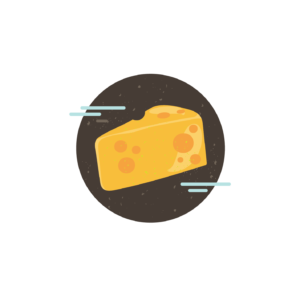
Illinois dairy farms produced approximately 220 million gallons of milk in 2015. Illinois farms generate more than $334 million in milk sales annually. In Illinois, the average dairy cow produces more than 6 gallons of milk per day. That’s more than 2,340 gallons of milk over the course of a typical year.
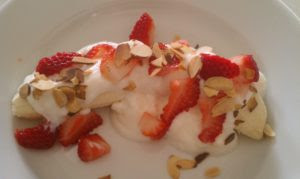 Try a tasty Strawberry Yogurt Banana Split as a breakfast entree!
Try a tasty Strawberry Yogurt Banana Split as a breakfast entree!FEATURED RECIPE: Cheesy Chicken and Zucchini Pasta
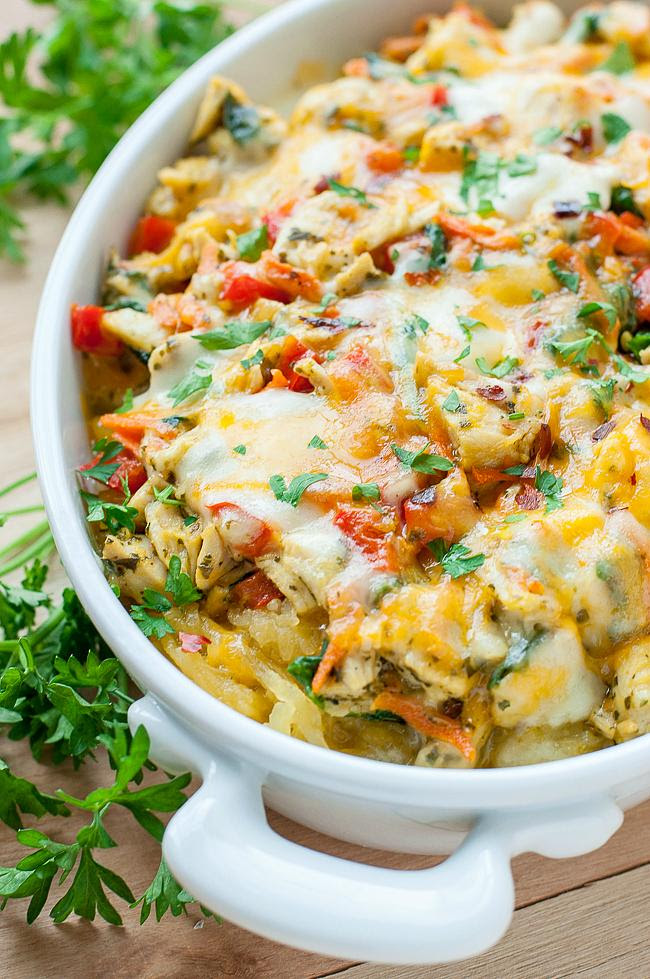
Looking for family recipes? Check out Midwest Dairy’s Recipe cache of over 100 dairy- related recipe options here.
FUN FACT: IT’S ALL ABOUT DAIRY!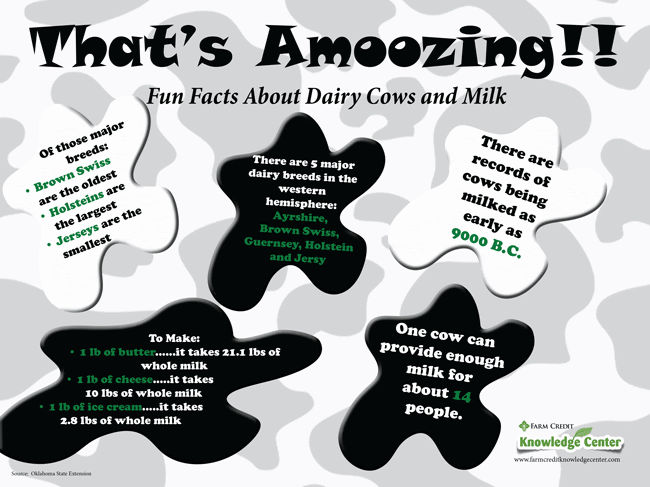
- Illinois is the 21st largest milk-producing state in the U.S.
- It takes about 48 hours for milk to travel from the farm to the dairy case.
- Illinois has 24 plants that process one or more dairy products.
- The greatest amount of milk produced in one year was 59,298 pounds by a Holstein cow named Robthom Sue Paddy.
- Cows have a very acute sense of smell. They can smell up to 6 miles away.
- To make one gallon of ice cream, it takes 12 pounds of whole milk.
- The most popular natural cheese in the United States is mozzarella.
- Our neighbor to the north, Wisconsin, uses ninety percent of the milk produced in the state for cheese.
- The natural yellow color of butter comes mainly from beta-carotene found in the grass that cows graze on.
NUTRITION FACTS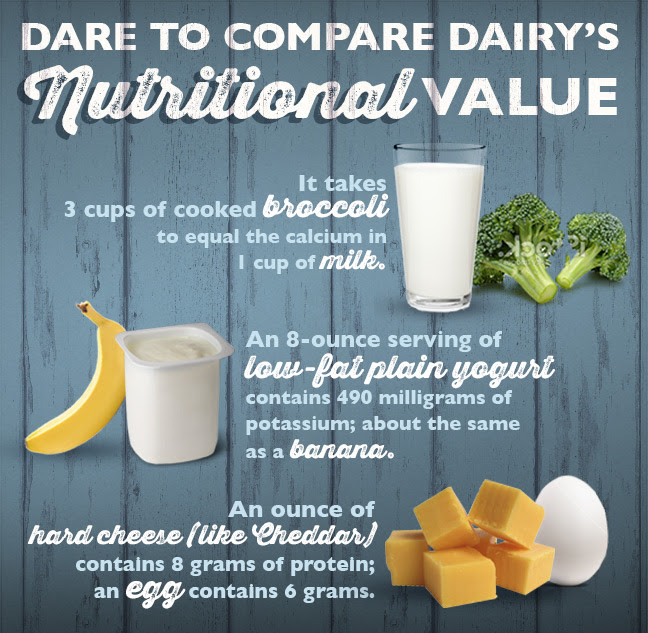
The perfect winter choice: Honey
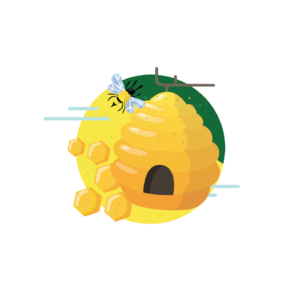 Feature local honey, dairy or grains during the winter months. Check out the Winter Harvest toolbox here.
Feature local honey, dairy or grains during the winter months. Check out the Winter Harvest toolbox here.Did you know?
Minerals and Vitamins Pack a Punch!

Put local Honey on the Menu!
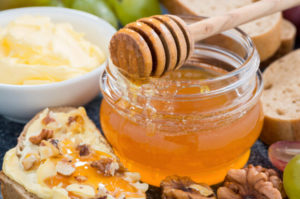
Featured Recipe: Crispy Sweet Brussels Sprouts with Local Honey

FUN FACT: It’s all about honey!
 Bees are the only insect in the world that make food that people can eat.
Bees are the only insect in the world that make food that people can eat.
- Honey contains all of the substances needed to sustain life, including enzymes, water, minerals and vitamins.
- One bee will only make 1/12 of a teaspoon on honey in its entire life.
- A bee’s wings beat 200 times a second, that’s 12,000 times a minute!
- Each colony smells different to bees, this is so they can tell where they live!
- Bees communicate by smells called ‘pheromones’ and by performing special ‘dances’.
- There are 900 cells in a bee’s brain.
- Bees have two separate stomachs; one for food and another just for nectar.
NUTRITION FACTS

How much do you know about grains?
Introduce your students to whole grains!
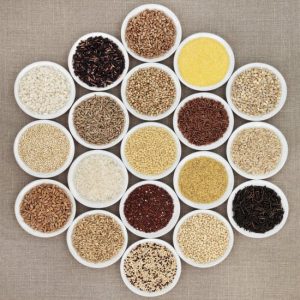 Buckwheat is one of the healthiest, nuttiest, most versatile whole grains. And, despite its name, it’s really not related to wheat at all. Buckwheat is actually the seed of a flowering fruit that is related to rhubarb and sorrel. It’s completely gluten-free and unrelated to wheat and all the grasses in the wheat family.
Buckwheat is one of the healthiest, nuttiest, most versatile whole grains. And, despite its name, it’s really not related to wheat at all. Buckwheat is actually the seed of a flowering fruit that is related to rhubarb and sorrel. It’s completely gluten-free and unrelated to wheat and all the grasses in the wheat family.Use Your Flour Power!
Put local grains on the menu!
Featured recipe: Wheat Berry and Apple Salad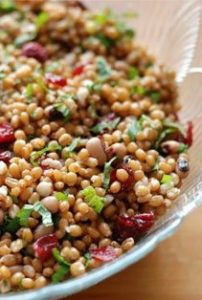
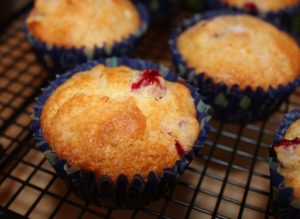 More recipes:
More recipes:
The “why” behind incorporating whole grains into your diet.
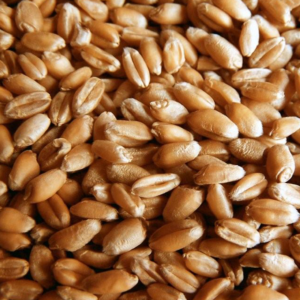
- Whole grains have similar amounts and sometimes more disease fighting chemicals than many typical fruits and vegetables!
- Whole grain intake can improve digestive health and help with weight management. Individuals who eat at least 3 servings of whole grains per day reduce their risk of:
- Heart disease by 25-36%
- Stroke by 37%
- Type 2 diabetes by 21-27%
- Cancer of digestive system by 21-43% and hormone related cancer by 10-40%
- Obesity
Fun facts
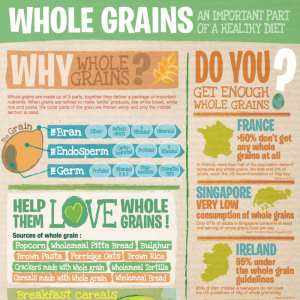 People have been eating whole grains for more than 17,000 years – they picked seeds, rubbed off the husks and chewed the kernels raw or boiled them in water.
People have been eating whole grains for more than 17,000 years – they picked seeds, rubbed off the husks and chewed the kernels raw or boiled them in water.- Egyptians used to bury mummies with necklaces made from barley.
- In 1324 King Edward II of England set the standard for the measurement – making the ‘inch’ equal to ‘three grains of barley, dry and round, placed end-to-end lengthwise’.
- One bushel of wheat contains around a million individual whole grain kernels.
- Amaranth is a whole grain that was incredibly important to the Aztecs. So when the Spanish invaded, their leader, Cortez, tried to destroy the Aztecs by not allowing them to grow it – anyone caught was put to death!
- Khorasan grain is a wheat variety that was brought to the US as a souvenir from an Egyptian tomb – it was sold as ‘King Tut’s Wheat’. Now known as kamut, an ancient Egyptian word for wheat, this rich, buttery-tasting wheat is certified organic.
- Quinoa, pronounced ‘keen-wa’, is a whole grain that was highly prized by the ancient Incas – they called it ‘gold of the Incas’.
- Pringles, the popular potato chip, are technically not potato chips but a slurry of rice, wheat, corn, and some potato flakes. Whoa!
- A massive Dutch famine during WWII helped discover celiac disease. Sick children recovered when wheat was scare, but fell ill once they resumed eating gluten.
- Rice does not need to grow in water, but since rice can survive in water, it is planted in it to control weeds and other pests, creating higher yields.
- Humans have fewer genes than rice.
- Quinoa, amaranth, millet, and sorghum can pop like popcorn.
- Corn needs to be cooked in limewater before its nutrients can be absorbed into the human body. While Native Americans knew this, early New World colonial settlers did not, which resulted in many deaths from malnutrition for those who were using it as a staple food.
Nutrition facts
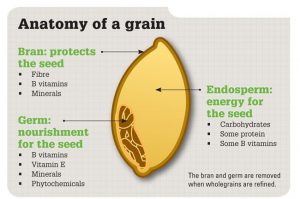
Celebrate Mardi Gras with local grains!

WARM UP! WITH HARVEST OF THE MONTH
The holidays are over and schools are settling back into their routine. It’s time to catch your student customers attention and bring them back into the lunch lines with Harvest of the Month!
Regional/local apples are a winter storage crop and are grown in Illinois, Wisconsin, Michigan, Minnesota, Indiana, and in Missouri, (for our western and southern Illinois schools!). There are two companies selling sliced regional (when available) apples to schools: Richland Hills Farms in Wisconsin and Peterson Farms in Michigan. Check with your produce distributor to order. If you cannot get these products try contacting the companies directly to locate a distributor near you.
Great winter veggies would be any root crop, such as parsnips, sweet potatoes, potatoes, beets, winter/hard squash, such as butternut, carnival and acorn varieties. If you are looking for a fruit, how about dried cranberries? Did you know Wisconsin has produced the largest crop of cranberries — currently, about 59% of the United States’ total production since 1995? 99% of Wisconsin cranberries are sold to Ocean Spray destined to become juice, dried cranberries, and fresh cranberries which are available through the holidays. If you need fun facts, nutrition facts or recipes for a vegetable or fruit that is not listed on the website please contact us!
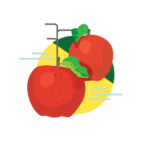
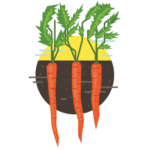
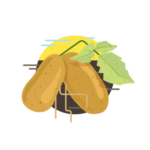
Featured Recipe: Cranberry Apple Coleslaw, hitting the trifecta of monthly featured foods!
For a colorful and healthy treat try Cranberry Apple Coleslaw as your Harvest of the Month recipe. This recipe is rated Basic for prep skills and has a sweet and tart crunch your students will love!
We have more cold salad recipes including Chicken Salad with Apples & Cranberries, Aztec Grain Salad, and Fresh Waldorf Salad.
Brrr! Looking for a recipe to stave off the winter chill? Try Cranberry Apple Cornbread Muffins or Apple Crisp.
SPRING PROGRAM TIPS AND INFORMATION
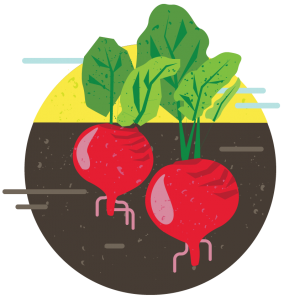 Spring is a wonderful time in Illinois! As the ground warms up, so can your Harvest of the Month Program. Many fruits and vegetables are planted in the spring which provides a great hands-on opportunity for garden programs. There are also harvest items that grow quickly and produce continuously, such as leafy greens, that are easy features for Harvest celebrations.
Spring is a wonderful time in Illinois! As the ground warms up, so can your Harvest of the Month Program. Many fruits and vegetables are planted in the spring which provides a great hands-on opportunity for garden programs. There are also harvest items that grow quickly and produce continuously, such as leafy greens, that are easy features for Harvest celebrations.
Other veggies, like asparagus, peas, and radishes, begin their peak availability season in May and are also good options for Harvest of the Month.
It’s spring- so get planting!
Spring is a wonderful time in Illinois! As the ground warms up, so can your Harvest of the Month Program. Many fruits and vegetables are planted in the spring which provides a great hands-on opportunity for garden programs. There are also harvest items that grow quickly and produce continuously, such as leafy greens, that are easy features for Harvest celebrations.
Divide and Conquer
Tastings and Immediate Use Planting Plans
Processing and Later Use Planting Plans
LETTUCE
This fantastic food can be easily grown indoors and out!
Lettuce is a crop that is grown across the U.S. This vegetable is a spring and fall crop requiring cool temps and bright light from direct sunshine or indoor grow lights. Lettuce is the “race car” of veggies with a short growing period of 30-45 days!
When you consider the possibilities, anyone can grow lettuce from seed in a window or a tented outdoor structure such as a cold frame or low tunnel with very little fuss. Using the “cut and pick again” method lettuce can be seeded in rows outdoors or in containers indoors every other week to provide a continuous harvest. Loose leaf and micro varieties are the easiest to grow using this method and are the most productive.
There are multiple variations for lettuce production including outdoor field planting, growing in low or high tunnels and cold frames, and indoor production in a greenhouse, hydroponic or aquaponic applications. Lettuce can be easily grown indoors in school hallways, in classroom windows, in a library or art room, greenhouse or even in the cafeteria! If you have an outdoor school garden, the addition of cold frames will extend your garden season by weeks in the spring and fall, providing seasonal produce for tastings and your meal lines. If you are growing indoors there are many ways to grow and harvest this versatile veggie!
Vertical growing units, or growing walls, can be constructed from inexpensive or reclaimed materials and installed in your school to create an amazing food production system! Growing walls not only provide food, they bring a natural beauty into the space and are a wonderful spot for students to read and study. A rolling, self-contained hydroponic unit, such as a tower garden, can be placed on display in school cafeterias during mealtime to peak student interest in healthy meal choices, and then moved from classroom to classroom to be incorporated into science, math and other curricula. The possibilities are endless when planning to grow lettuce!
Do you want to learn more about cold frames or indoor growing methods? Check out these websites for options and tips. Share your ideas with school staff, form a plan, and then search for gardening grants and tools in our monthly newsletter, or on our website to grow support for your garden project. 
- The Green Wall Project
- MotherEarthNews-gardening with cold frames
- CivilEats- Chicago High School Grows Hydroponically
- Growing Bottle Lettuce
- Soda Bottle Vertical Project
- How To Grow a Vertical Garden
check out more garden resources here
Featured Recipe: BBQ Ranch Chicken Chopped Salad
Cooking and Prep Level: Intermediate
Servings: 100
This recipe showcases scratch made, shelf-stable spice blends.
What’s the easiest way to get kids in line at lunchtime? Offer a salad with both Ranch and BBQ flavors! This recipe utilizes scratch made spice blends, cutting out the heavy sodium levels and chemicals in pre-made blends. USDA chopped chicken becomes a star ingredient when it’s paired with BBQ and Ranch seasonings! This recipe works well as a self-serve entree in an individual clam-shell, or as an easy bulk service entree served from hotel pans. With a sure to please taste, using kid-friendly ingredients and flavors, what’s not to love?
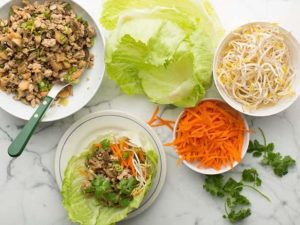 More LETTUCE recipes for April:
More LETTUCE recipes for April:
Kewl (cool!) Tuna Salad Flat Bread (use up that USDA tuna!)
Try Chicken Caesar Salad on the school lunch tray and send the Quick & Easy Lettuce Wraps recipe to your school families at home to create a great promotion! By promoting your Harvest of the Month program on the meal line, and at home, you can create multiple food exposures and drive up participation.
We have two family recipes and five food service recipes for April. You can check them out here!
Lettuce Fun Fact: A History of Salad!
In the United States, head lettuce was for many years commonly cut and served as a wedge, covered simply with mayonnaise or another dressing, and eaten with a knife and fork. Wedge Salads were popular in fine dining and Mom & Pop restaurants, alike. This simple Wedge Salad was served less frequently as other specialty salads hit the dining scene. In 2015 popular restaurant chains began re-introducing the Wedge with new, imaginative ingredients and bold dressings. Today, the Wedge is slowly making a comeback!
The always popular Caesar Salad is made only with leaves of romaine lettuce tossed with a special dressing, including a raw egg and small pieces of anchovy. Legend has it that Italian-American restaurateur Caesar Cardini invented the salad in 1924 in Tijuana, Mexico. According to The Telegraph, Cardini owned a restaurant in the tourist destination to “attract Americans frustrated by Prohibition.” The exact story is disputed, but the general consensus is that over Fourth of July weekend, Cardini threw together a bunch of ingredients he had on hand and served his concoction to his friends. Needless to say, the improvised dish caught on. (Source: The Origins of Caesar Salad, from huffingtonpost.com)
In parts of the American South the Wilted Lettuce Salad, or killed “kilt” salad is a family favorite made by pouring a warm dressing made with bacon fat and vinegar over lettuce leaves to produce a wilted effect. Much like German Potato Salad, this lettuce salad has a sweet/sour flavor profile due to the perfect balance of vinegar and sugar in the dressing. (Source: TheSpruceWiltted”Kilt”Salad)

A relative newcomer to the salad scene is mesclun, a mixture of baby leaves consisting of several lettuce types and other leafy vegetables, some of which are fairly exotic. These may include arugula or rocket, actually a partially domesticated weed; a fine-leaved endive called frisée; mizuna, a small, dark green round leaf from Japan; spinach, beet tops, or chard; red chicory (radicchio); and romaine, butterhead, and red and green leaf lettuces. These leaves are cut in the field by hand or mowed when they are no more than ten centimeters long.
(Source: Encyclopedia.com)
Here are more Lettuce fun facts from our website. These can be utilized as fun meal line signage to draw attention to your Harvest of the Month!
It’s All About Romaine:
- Romaine is the American term for this long-leafed lettuce, also called cos or cos lettuce (mainly with British-speaking peoples) because it is said to have originated on the Greek island of Cos (Kos), off the coast of Turkey in the Aegean Sea (also the birthplace of the physician Hippocrates).
- Its original home is in western Europe and the eastern Mediterranean area. Romaine has been cultivated and eaten cooked or raw for almost 5,000 years and may very well be the oldest form of cultivated lettuce.
- In 2015, the crew aboard the space station got their first taste of Romaine lettuce, grown entirely in space! The lettuce was planted, cultivated, and harvested entirely on board the station, sprouting in a collapsible growth chamber adorably known as Veggie from “rooting pillows” under red, green, and blue LEDs. Served with a classic oil-and-vinegar dressing, the space leaves were a wild success. Astronauts dubbed them “awesome.”
(Excerpt from National Geographic’s The Plate, 8/13/15)
Lettuce Nutrition Facts:
These nutrition facts can be added to middle/high school meal lines and cafeteria signage to educate, as well as, draw attention to your Harvest of the Month! Sharing your Harvest of the Month activities with other school staff can lead to multiple exposures for your featured fruit or veggie. The more exposure kids have to a new fruit or veg, the more likely they are to accept it! Carrots may not be an issue with kids, but applying this technique to other, less popular veggies like beets or dark leafy greens can be the difference between acceptance and total disinterest. 
- It’s got more vitamin C than an orange!
- It’s got protein! What? Yep, protein!
- Lots of omega 3-which is an essential fat. Keeps you warm, keeps your hair pretty and your skin radiant.
- Lots of water! One salad made with romaine lettuce is almost a cup of water, seriously, one head has 20 ounces!
- It’s full of good things like vitamins A&K and a nice dose of potassium. Potassium almost instantly will stop leg cramping. Go ahead and put it to the test after a long day of being on your feet.
SPINACH
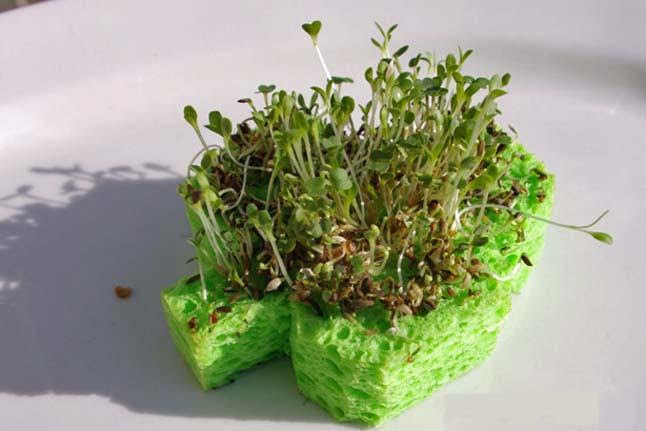 Display spinach sprouts grown on everyday sponges on the lunch lines and on tasting tables. You can even cut the sponges into a spinach leaf design before sprouting your spinach seeds! Sponge Sprouts can be utilized as a great classroom activity. Step by step directions can be found here.
Display spinach sprouts grown on everyday sponges on the lunch lines and on tasting tables. You can even cut the sponges into a spinach leaf design before sprouting your spinach seeds! Sponge Sprouts can be utilized as a great classroom activity. Step by step directions can be found here. Spinach is a powerhouse of nutrition. Create stick-figure superhero characters based on the superpowers of spinach and display them on your line and in the cafeteria. You can list each “green superpower” on a separate poster for your cafeteria walls or share these superpowers on individual sneeze-guard cards.
Spinach is a powerhouse of nutrition. Create stick-figure superhero characters based on the superpowers of spinach and display them on your line and in the cafeteria. You can list each “green superpower” on a separate poster for your cafeteria walls or share these superpowers on individual sneeze-guard cards.You can find spinach superpowers here.
Need help with veggie promotion and education? University of Illinois Extension educators have resources they can share to build interest and promote veggie education. Contact your UI EXT educator here for ideas.
Featured Recipe: Spinach and Chicken Quesadillas
Spinach Fun Fact: A Veggie with a Long History.

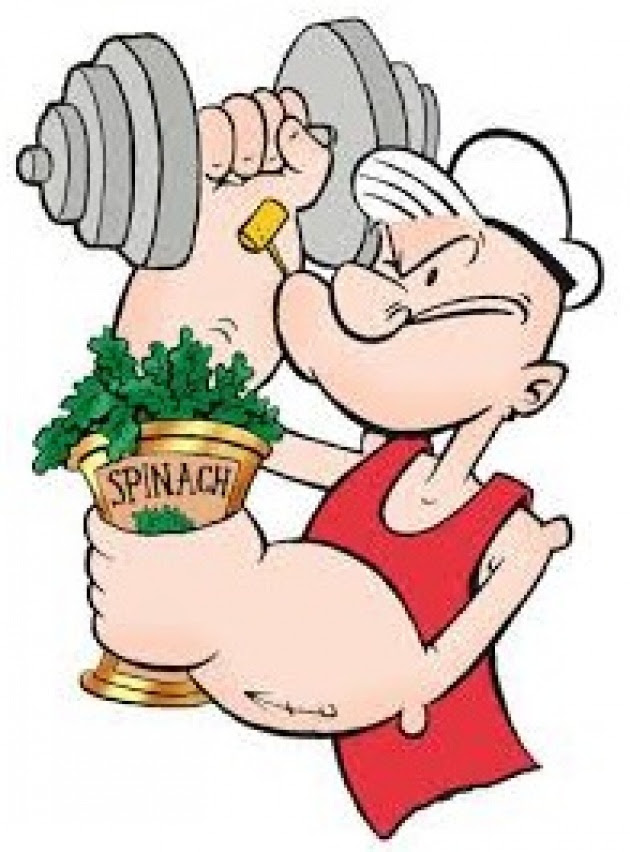 In the 1930’s U.S. spinach growers credited Popeye, a cartoon character, with a 33% increase in domestic spinach consumption – a welcome boost to an industry during the depression era. The spinach growing town of Crystal City, Texas, erected a statue of the cartoon character, Popeye, in 1937.
In the 1930’s U.S. spinach growers credited Popeye, a cartoon character, with a 33% increase in domestic spinach consumption – a welcome boost to an industry during the depression era. The spinach growing town of Crystal City, Texas, erected a statue of the cartoon character, Popeye, in 1937.Spinach Nutrition Facts:
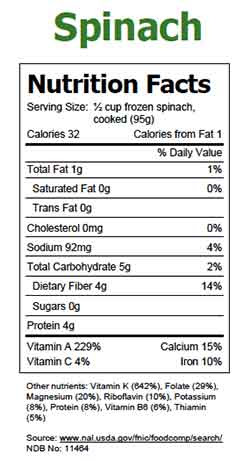
- Spinach is low in fat and even lower in cholesterol
- Spinach is high in:
- Niacin and zinc, as well as protein, fiber, vitamins A, C, E and K, thiamine, vitamin B6, folate, calcium, iron, magnesium, phosphorus, potassium, copper, and manganese.
- In other words, it’s loaded with good things for every part of your body!
Fast Growing Shoots and Sprouts Deliver!
- Much like watercress, the stems of Pea Shoots are edible — and the tendrils are just delicious. Sprouts cook very similar to baby spinach and are versatile, too. Enhance recipes with pea shoot’s or radish sprouts spring flavor.
- You can eat Pea Shoots raw in a fresh salad; they can take the place of the more traditional lettuce or simply enhance it with pea shoot’s spring flavor.
- You can share whole shoots in taste tests with young children. Eating a live plant will excite and engage your kids!
- You can stir fry them with sesame oil and garlic, as has long been done in Asian cooking.
- Like microgreens, shoots of any type are grown in soil. In growing shoots, the young greens are eaten, being at their nutritional peak.
- You can grow them in any drainable container like buckets, cups, trimmed down plastic water bottles, in egg cartons, even in the egg shells themselves. A sunny windowsill and water is all you will need. Many beans and seeds may easily and very quickly sprouted indoors.
- When sprouting outside of soil, seeds soaked in water begin to germinate and produce a sprout, a young growth.
- Besides vitamins C, A, and K, sprouts contain fiber, manganese, riboflavin, copper, protein, thiamin, niacin, vitamin B6, pantothenic acid, iron, magnesium, phosphorus, and potassium. The amounts these vitamins and minerals impart generate benefits for nearly every area of the body.


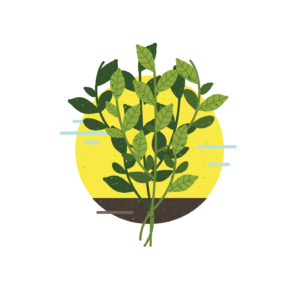

 The
The 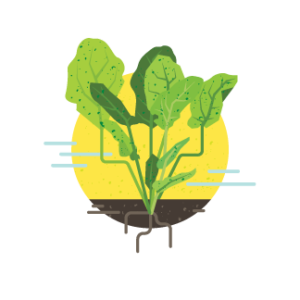 Access the Illinois Farm to School Garden Toolkit
Access the Illinois Farm to School Garden Toolkit 


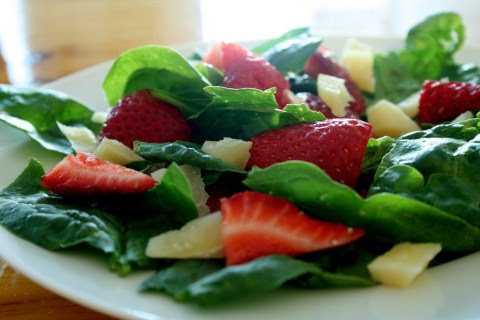 More SPINACH recipes for Spring:
More SPINACH recipes for Spring:

